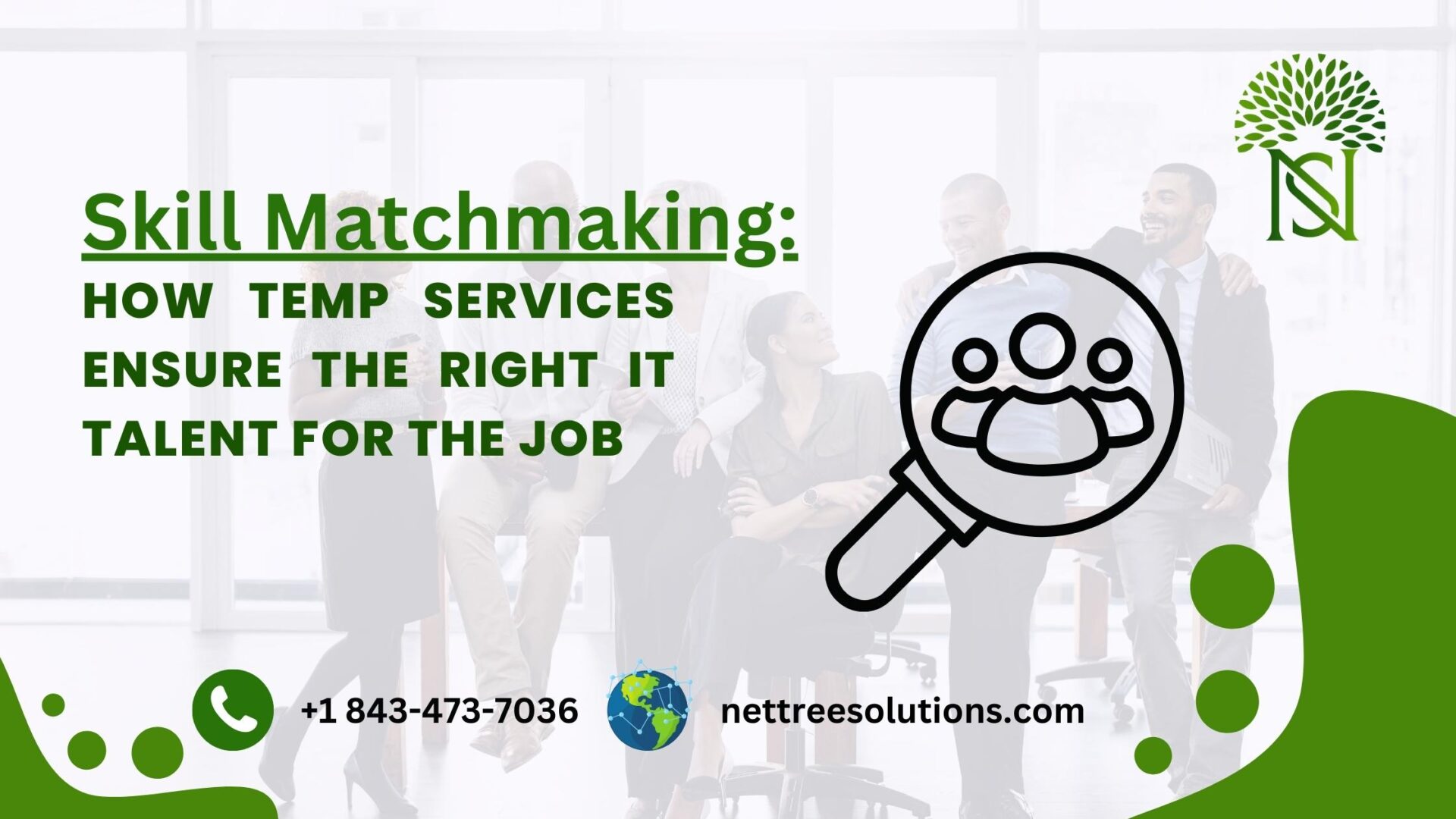Attracting and retaining top talent through strategic global recruitment from around the world has become crucial for US companies to thrive. This goes beyond simply identifying and recruiting the best candidates; it involves facilitating their smooth relocation and successful integration into the company culture and the broader American way of life.
Challenges of Global Recruitment
While the benefits of a global workforce are undeniable, the process can be fraught with complexities and challenges. Here are some of the key hurdles that US companies face in global recruitment:
Visa Processing: Demystifying the Labyrinth for Global Recruitment
The intricate world of visa applications can be a daunting maze for international candidates seeking to join the US workforce. A single misstep in this complex process can lead to delays, rejections, and frustration, effectively hindering their journey to fulfilling their career aspirations in the US.
Understanding the different types of visas available is crucial for navigating this labyrinth. Here’s a breakdown of some key visa categories:
- Non-Immigrant Visas:
- H-1B Visa: This coveted visa is designed for highly skilled professionals working in specialty occupations like engineering, computer science, and healthcare. It requires a valid employer-sponsor demonstrating the need for the candidate’s specific skills and offering a prevailing wage.
- L-1 Visa: This visa allows multinational companies to transfer employees from their overseas offices to work in the US for a temporary period.
- O-1 Visa: This visa caters to individuals with extraordinary abilities in the arts, sciences, education, business, or athletics.
- J-1 Visa: This visa facilitates cultural exchange programs for participants in research, education, and training initiatives.
- Immigrant Visas:
- EB-1 Visa: This visa category prioritizes individuals with extraordinary ability in their field or those who have achieved sustained national or international acclaim.
- EB-2 Visa: This category seeks professionals with advanced degrees or exceptional abilities in fields experiencing workforce shortages.
- EB-3 Visa: This visa is designed for skilled workers, professionals, and unskilled laborers in specific occupations with demonstrated job offers in the US.
Challenges in Visa Processing:
- Complex and Lengthy Procedures: The application process can be lengthy and involve extensive paperwork, requiring meticulous attention to detail and adherence to specific deadlines.
- High Costs: Visa application fees, lawyer consultations, and medical examinations can significantly add to the financial burden of relocation.
- Uncertainty and Potential Delays: The approval process can be unpredictable, leading to anxiety and impacting career plans.
- Technicalities and Legal Jargon: Navigating the legal jargon and complex regulations can be overwhelming for individuals unfamiliar with the US immigration system.
Strategies for Streamlining Visa Processing:
- Partner with a Global Recruitment Agency : Experienced agencies can provide invaluable guidance and assistance throughout the visa application process, from selecting the right visa category to ensuring proper documentation and legal compliance.
- Leverage Technology Solutions: Many online resources and platforms can simplify the application process, offering guidance and tools to streamline paperwork and track application progress.
- Seek Expert Legal Counsel: Consulting with an immigration attorney specializing in employment-based visas can provide expert advice, ensure legal accuracy, and increase the chances of a successful application.
- Prepare Early and Thoroughly: Gathering all necessary documents well in advance and proactively addressing potential issues can significantly expedite the process.
Cultural Adjustment: It’s Importance in Global Recruitment
For international employees, transitioning to life and work in the US can be a challenging yet rewarding experience. While excited about their new career opportunities, they often face significant difficulties adjusting to unfamiliar customs, contrasting work styles, and, most importantly, language barriers. These challenges can lead to stress, isolation, and decreased productivity, impacting their overall well-being and performance.
1: Language Barriers :-
- Difficulty communicating effectively with colleagues, managers, and clients can lead to misunderstandings, frustration, and missed opportunities.
- Limited English proficiency can hinder their ability to fully participate in meetings, presentations, and social interactions, leading to feelings of exclusion.
- The lack of confidence in speaking English can hold them back from seeking help, voicing concerns, and expressing their ideas effectively.
2: Unfamiliar Customs :-
- Navigating social norms, etiquette, and cultural expectations can be confusing and overwhelming for newcomers.
- Misinterpreting non-verbal cues, humor, and gestures can lead to awkward situations and misunderstandings.
- Difficulty adapting to the fast-paced and direct communication style prevalent in the US workplace can create discomfort and anxiety.
3: Contrasting Work Styles :-
- Different expectations around work-life balance, decision-making processes, and hierarchy can lead to confusion and frustration for employees accustomed to a different work culture.
- The emphasis on individual initiative and self-promotion in the US workplace can be challenging for individuals from cultures that value collaboration and consensus building.
- Adaptations to performance management systems, feedback mechanisms, and conflict resolution styles may require time and support.
4: Strategies for Facilitating Cultural Adjustment :-
- Pre-Arrival Cultural Orientation: Providing information about American customs, values, and workplace norms through workshops, online resources, and cultural sensitivity training can help international employees prepare for their move.
- Language Support: Offering English language classes and resources, including language partners and online learning platforms, can significantly improve communication skills and confidence.
- Mentorship Programs: Pairing international employees with experienced mentors who understand their cultural background can provide guidance, support, and a sense of belonging.
- Social Events and Networking Opportunities: Organizing cultural exchange events, team-building activities, and informal gatherings can help employees build relationships, connect with colleagues, and feel more integrated into the company culture.
- Flexible Work Arrangements: Offering flexible work schedules and remote work options can accommodate individual needs and preferences, improve work-life balance, and reduce stress for employees adjusting to a new culture.
5: Additional Considerations :-
- Addressing issues through global recruitment related to family relocation, including childcare, schooling options, and spousal employment opportunities, can further enhance the cultural adjustment process.
- Providing access to culturally relevant resources, such as ethnic grocery stores and religious institutions, can help employees maintain their cultural identity and sense of community.
- Celebrating diversity and encouraging intercultural understanding through company-wide initiatives can create a more inclusive and enriching work environment for everyone.
Navigating the Global Recruitment Logistics Labyrinth: Supporting Talent in their US Move
For international employees embarking on a new chapter in the US, the logistical aspects of relocation can be just as daunting as the cultural differences. Finding suitable housing, managing finances in a new currency, and navigating unfamiliar local resources can be overwhelming, leading to unnecessary stress and impacting their settling-in process.
1: Finding Suitable Housing :-
- Unfamiliarity with different housing options, neighborhoods, and rental agreements can lead to rushed decisions and unsatisfactory living situations.
- Accessing reliable information about rental scams, security concerns, and neighborhood amenities can be challenging for newcomers.
- Difficulty navigating complex application processes and competition for desirable housing can lead to frustration and delays.
2: Managing Finances in a New Currency :-
- Understanding currency exchange rates, opening bank accounts, and establishing credit history can be confusing and time-consuming processes.
- Budgeting for living expenses, setting up utilities, and navigating unfamiliar tax systems can be challenging for those accustomed to different financial systems.
- Unfamiliarity with US financial products and services can lead to missed opportunities and potential financial difficulties.
3: Navigating Unfamiliar Local Resources :-
- Finding essential services like healthcare providers, transportation options, and childcare facilities can be overwhelming without local knowledge and guidance.
- Accessing government services, registering with local authorities, and obtaining necessary licenses can involve complex bureaucratic procedures.
- Difficulty understanding local communication channels, public information resources, and community events can lead to feelings of isolation and disconnect.
4: Strategies for Streamlining Global Recruitment Logistics :-
- Pre-Departure Relocation Assistance: Providing information about different housing options, neighborhoods, and average rental costs can help employees make informed decisions before their arrival.
- Partnership with Relocation Companies: Partnering with experienced relocation agencies can offer invaluable assistance with finding suitable housing, navigating rental agreements, and completing necessary paperwork.
- Financial Literacy Workshops: Organizing workshops to educate employees about global recruitment, currency exchange, banking systems, credit building, and budgeting can help them manage their finances effectively.
- Local Resource Guides: Creating comprehensive guides or online resources with information about essential services, public transportation options, and community resources can empower employees to navigate the local landscape.
- Cultural Ambassadors Program: Establishing a network of cultural ambassadors within the company can provide peer support, guidance, and assistance with navigating local resources and cultural nuances.
5: Additional Considerations :-
- Assisting with finding pet-friendly housing and arranging pet relocation services can ease the transition for employees with furry companions.
- Providing information and assistance required with global recruitment starting with obtaining an international driver’s license and navigating local traffic regulations can improve their mobility and independence.
- Offering cultural immersion experiences and community engagement opportunities can help employees build social connections and feel more integrated into their new local environment.
Strategies for Success : Set a benchmark for your global recruitment services
For global talent to thrive in their new roles and environment, comprehensive pre-arrival support is crucial. This proactive approach sets the stage for a smooth transition, facilitates cultural understanding, and ultimately leads to employee satisfaction and success. Here are some key elements of effective pre-arrival support:
1: Information Provision :-
- Company Culture: Providing detailed information during the global recruitment process about the company’s culture, values, work environment, and expectations allows international employees to understand their new workplace and adjust accordingly.
- Life in the US: Sharing comprehensive resources on American customs, traditions, etiquette, and social norms helps employees familiarize themselves with the cultural landscape and navigate social situations with confidence.
- Relocation Logistics: Offering information on housing options, neighborhoods, transportation systems, and essential services guides employees through the logistics of relocation and makes the process less daunting.
2: Visa Assistance :-
- Application Guidance: Providing clear instructions, timelines, and checklists for visa applications helps employees prepare effectively and avoid delays.
- Legal Support: Partnering with immigration lawyers or offering legal consultations can ensure proper documentation and compliance with US immigration regulations.
- Financial Aid: Some companies offer financial assistance or sponsorship programs to support visa application costs, easing the financial burden on employees.
3: Cultural Orientation :-
- Online Programs: Interactive online platforms offering cultural orientation modules, language learning tools, and virtual tours of the city can familiarize employees with American culture before their arrival through the global recruitment process.
- Cultural Sensitivity Training: Providing workshops or training sessions for existing employees helps them understand different cultural perspectives and fosters a more inclusive and welcoming environment for international colleagues.
- Buddy Programs: Pairing newcomers with experienced mentors or cultural buddies can provide valuable guidance, support, and a sense of belonging within the company.
4: Housing and Settling-In Support :-
- Housing Assistance: Partnering with relocation companies or offering temporary housing arrangements can ease the burden of finding suitable accommodation in an unfamiliar city, as this support should help a candidate during global recruitment process.
- Neighborhood Information: Providing information about different neighborhoods, amenities, and community resources helps employees choose a location that suits their needs and preferences.
- Settling-In Assistance: Offering airport pick-up, help with setting up utilities, and introductions to local community organizations can make the settling-in process smoother and less stressful.
5: Onboarding and Mentorship :-
- Implement structured onboarding programs to help employees understand the company culture, their roles and responsibilities, and internal details during the global recruitment processes.
- Assign mentors who can provide guidance, support, and answer questions from a cultural and professional perspective that can be expected to arise during a global recruitment procedure.
- Offer language classes and resources to improve communication skills and facilitate integration.
6: Cultural Sensitivity Training :-
- Foster a welcoming and inclusive environment by providing cultural sensitivity training to all employees.
- Celebrate diversity and encourage cross-cultural understanding through social events and team-building activities.
- Implement policies that promote equal opportunities and prevent discrimination based on national origin during global recruitment processes.
7: Networking Opportunities :-
- Facilitate connections with colleagues and other professionals outside of work to help employees build social networks and feel integrated into the community to facilitate premium global recruitment opportunities.
- Organize professional development opportunities and encourage participation in industry events to foster career growth and belonging.
8: Family Support :-
- Recognize the importance of family support and offer assistance with finding childcare, schools, and healthcare options for families relocating with their employees.
- Provide resources and support for spouses and partners seeking employment opportunities in the US.
Examples of Success : The rise of Global Recruitment
Several US companies have mastered the art of attracting and retaining top global talent through their successful implementation of these strategies. Some notable examples include:
- Google: Offers a comprehensive relocation package, cultural programs, language classes, and mentorship opportunities for international employees.
- Facebook: Provides a “Global Mobility” program that offers personalized support throughout the relocation process, including assistance with visas, housing, and cultural adjustment.
- Salesforce: Has a dedicated “Global Talent Acquisition” team that actively sources and recruits international talent, providing a wide range of programs and resources to support their integration.
Benefits of Global Recruitment: Unleashing Your Competitive Edge
. By embracing global recruitment, businesses unlock a wealth of benefits that fuel their growth and success. Here’s how:
1: Innovation and Diversity:-
- Fresh perspectives: Global recruitment facilitates diverse experiences, viewpoints, and problem-solving approaches, leading to creative breakthroughs and innovative solutions.
- Enhanced decision-making: A diverse workforce fosters a more inclusive and informed decision-making process, leading to more strategic choices and better results.
2: Global Competitiveness:-
- Wider talent pool: Accessing a broader range of skilled professionals allows companies to fill critical roles and tap into expertise unavailable locally.
- Enhanced global reach: With employees who understand international markets and cultures, companies can expand their reach and compete effectively on a global stage.
3: Brand Reputation and Attraction :-
- Positive employer image: Treating international employees with respect and fairness builds a strong employer brand and attracts high-potential talent worldwide.
- Talent pipeline for the future: By investing in global recruitment process, companies build a strong pipeline of future leaders and innovators.
4: Increased Revenue and Market Share :-
- New market opportunities: Global recruitment can help companies tap into new markets, understand diverse customer needs, and develop targeted products and services.
- Improved market penetration: A diverse workforce can help companies better understand and connect with customers from various cultural backgrounds, leading to increased market share.
Investing in global recruitment goes beyond attracting talent; it’s a strategic investment in your company’s future. By leveraging the skills, perspectives, and experiences of a diverse workforce, US businesses can unlock innovation, enhance competitiveness, and achieve sustainable growth in the global marketplace.
Remember, global recruitment is not just about filling roles; it’s about building a diverse and inclusive workforce that drives your company’s success in a globalized world.
Conclusion
In today’s competitive global landscape, effective global recruitment and integration strategies are no longer optional; they are essential for success. By investing in pre-arrival support, onboarding programs, cultural sensitivity training, and family support, US companies can create a welcoming environment that fosters the success of their international employees. This, in turn, unlocks a wealth of talent, diversity, and innovation, driving organizational growth and solidifying a competitive edge in the global marketplace.








